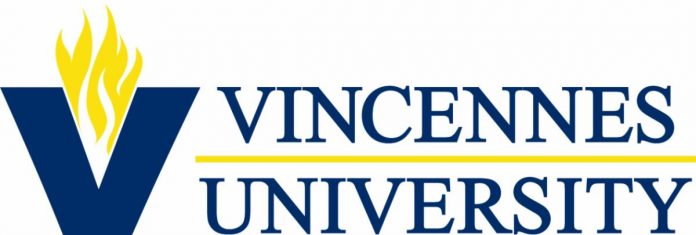Thanks to this third and final wave of investment from President Biden’s Bipartisan Infrastructure Law, EPA is funding all the construction work that is ready to begin at Superfund sites nationwide
WASHINGTON  —  The U.S. Environmental Protection Agency announced a third and final wave of more than $1 billion for cleanup projects at more than 100 Superfund sites across the country as part of President Biden’s Investing in America agenda. This funding is made possible by the President’s Bipartisan Infrastructure Law and will launch new cleanup projects at 25 Superfund sites and continue other cleanups at over 85 Superfund sites.
Thousands of contaminated sites exist nationally due to hazardous waste being dumped, left out in the open, or otherwise improperly managed. These sites can include toxic chemicals from manufacturing facilities, processing plants, landfills and mining, and can harm the health and well-being of local communities in urban and rural areas. More than one in four Black and Hispanic Americans live within three miles of a Superfund site.
Today’s investment is the final wave of funding from the $3.5 billion allocated for Superfund cleanup work in the President’s Bipartisan Infrastructure Law. So far, EPA has deployed more than $2 billion for cleanup activities at more than 150 Superfund National Priorities List sites. Thanks to President Biden’s commitment to addressing legacy pollution and improving public health, EPA has been able to provide as much funding for cleanup work in the past two years as it did in the previous five years while delivering on President Biden’s Justice40 Initiative, which set a goal to deliver 40% of the overall benefits of certain federal investments to disadvantaged communities that are marginalized by underinvestment and overburdened by pollution.
“After three rounds of investments, EPA is delivering on President Biden’s full promise to invest in cleaning up America’s most contaminated Superfund sites,†said EPA Deputy Administrator Janet McCabe. “This final round of Bipartisan Infrastructure Law funding has made it possible for EPA to initiate clean ups at every single Superfund site where construction work is ready to begin. This is an incredible milestone in our efforts to clean up and protect communities, deliver local jobs, enhance economic activity, and improve people’s lives for years to come.â€
“Every American deserves clean air to breathe and access to clean land and water, no matter their zip code. That’s why as Chairman of the Environment and Public Works Committee, I worked tirelessly with my colleagues on and off the committee to craft the Bipartisan Infrastructure Law, which included billions of dollars for the Superfund program,†said Senator Tom Carper, Chairman of the U.S. Senate Environment and Public Works Committee. “I’m pleased to see EPA announce over $1 billion of that funding today for more than 100 of our nation’s most contaminated sites – helping communities across the country clean up legacy pollution and protect public health all while supporting local economies.â€
“Superfund sites threaten public and environmental health across the country, but with today’s announcement, the Bipartisan Infrastructure Law is continuing to deliver on the promise we made to clean up backlogged sites and give our communities the peace of mind they deserve,†said Rep. Frank Pallone, Jr., Ranking Member of the House Energy and Commerce Committee. “For dozens of communities, today’s funding is a welcome assurance that help is on the way. I appreciate the Biden Administration’s commitment to transforming communities that have been impacted by toxic contamination and applaud EPA for moving swiftly to put the Bipartisan Infrastructure Law’s resources to work.â€
Thanks to the Bipartisan Infrastructure Law funding announced today, a number of new cleanup projects will move forward, including:
- At the East Helena Superfund site in East Helena, Montana, funds will advance critical cleanup of soil and groundwater contamination caused by more than a century of smelting lead, zinc, and other metals at the former ASARCO facility.
- At the US Finishing/Cone Mills Superfund site in Greenville, South Carolina, funds will support the completion of cleanup work at the site by treating contaminated groundwater, paving the way for the site’s return to productive use as mixed-use development (commercial and residential) through a unique public-private partnership with the state of South Carolina and landowners.Â
- At the Standard Chlorine of Delaware Inc. Superfund site in New Castle, Delaware, funds will go toward excavation and treatment of wetland soils and sediment contaminated through historical industrial activities and spills outside of the former chemical manufacturing plant.
- At the Sulphur Bank Mercury Mine Superfund site in Lake County, California, funds will address mining waste to help ensure the long term protection of residential areas and make on-site mine areas safe for limited use by Elem Indian Colony residents for hunting, fishing, foraging, and transit to nearby lands.
- At the Iron King Mine/Humboldt Smelter Superfund site in Dewey-Humbolt, Arizona, funding will protect the community from mining and smelting waste by cleaning up additional residential properties and permanently consolidating the contaminated waste.
EPA is committed to advancing environmental justice and incorporating equity considerations into all aspects of the Superfund cleanup process. Thus far, nearly 80% of the funding from the Bipartisan Infrastructure Law has gone to sites in communities with potential environmental justice concerns. Out of the 25 sites to receive funding for new cleanup projects, more than 75% are in communities with potential environmental justice concerns based on data from EJSCREEN.
President Biden’s Investing in America agenda is restoring the health and economic vitality of communities that have been exposed to pervasive legacy pollution. The historic investment made by the Bipartisan Infrastructure Law strengthens every part of the Superfund program, making a dramatic difference in EPA’s ability to tackle threats to human health and the environment. In addition to funding cleanup construction work, the investment is enabling EPA to increase funding for and accelerate essential work needed to prepare sites for construction and to ensure communities are meaningfully involved in the cleanup process. In 2023, EPA continued to fund Superfund pre-construction activities such as remedial investigations, feasibility studies, remedial designs, and community involvement at double pre-Bipartisan Infrastructure Law levels.
In 1980, Congress passed the Comprehensive Environmental Response, Compensation and Liability Act (CERLCA), known as Superfund. The law gave EPA the authority and funds to hold polluters accountable for cleaning up the most contaminated sites across the country. When no viable responsible party is found or cannot afford the cleanup, EPA steps in to address risks to human health and the environment using funds appropriated by Congress, like the funding provided by the Bipartisan Infrastructure Law.
To see a list of the 25 sites to receive funding for new cleanup projects, visit EPA’s Superfund webpage.









